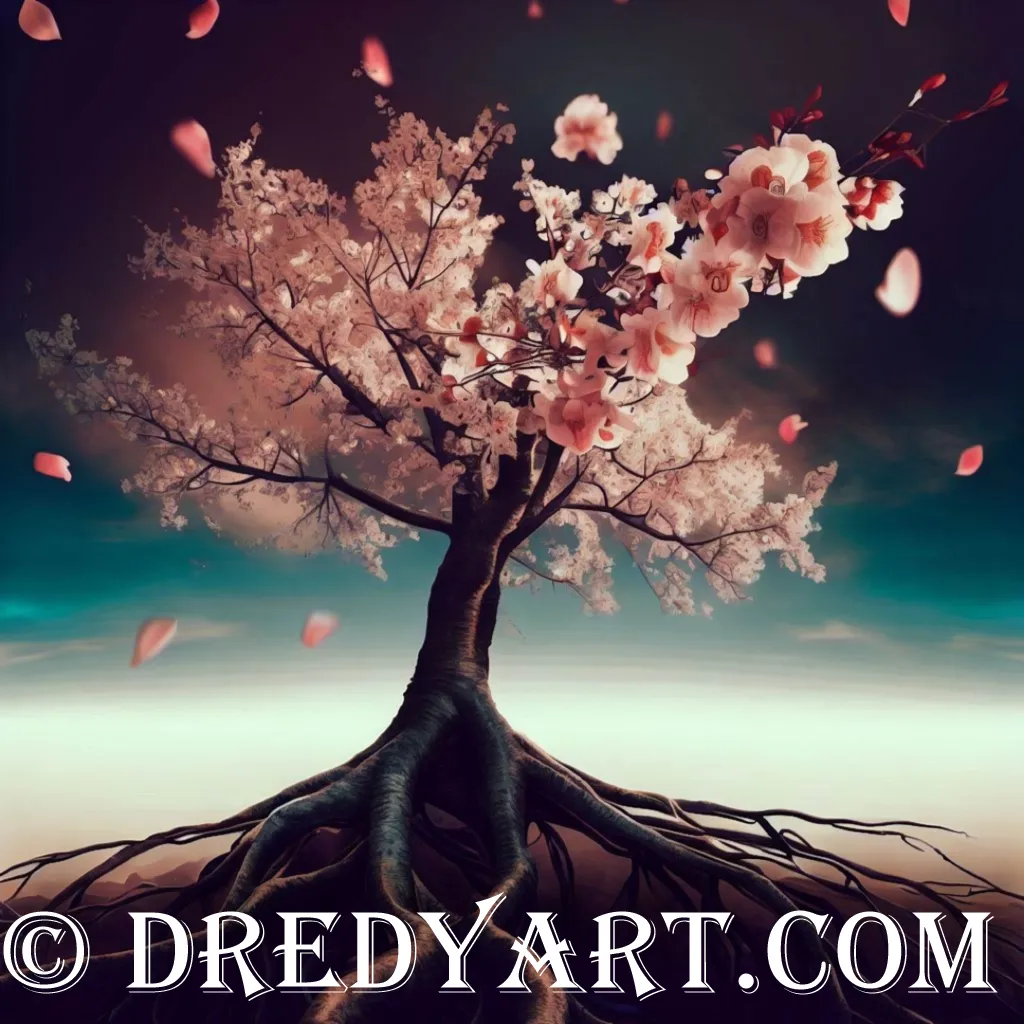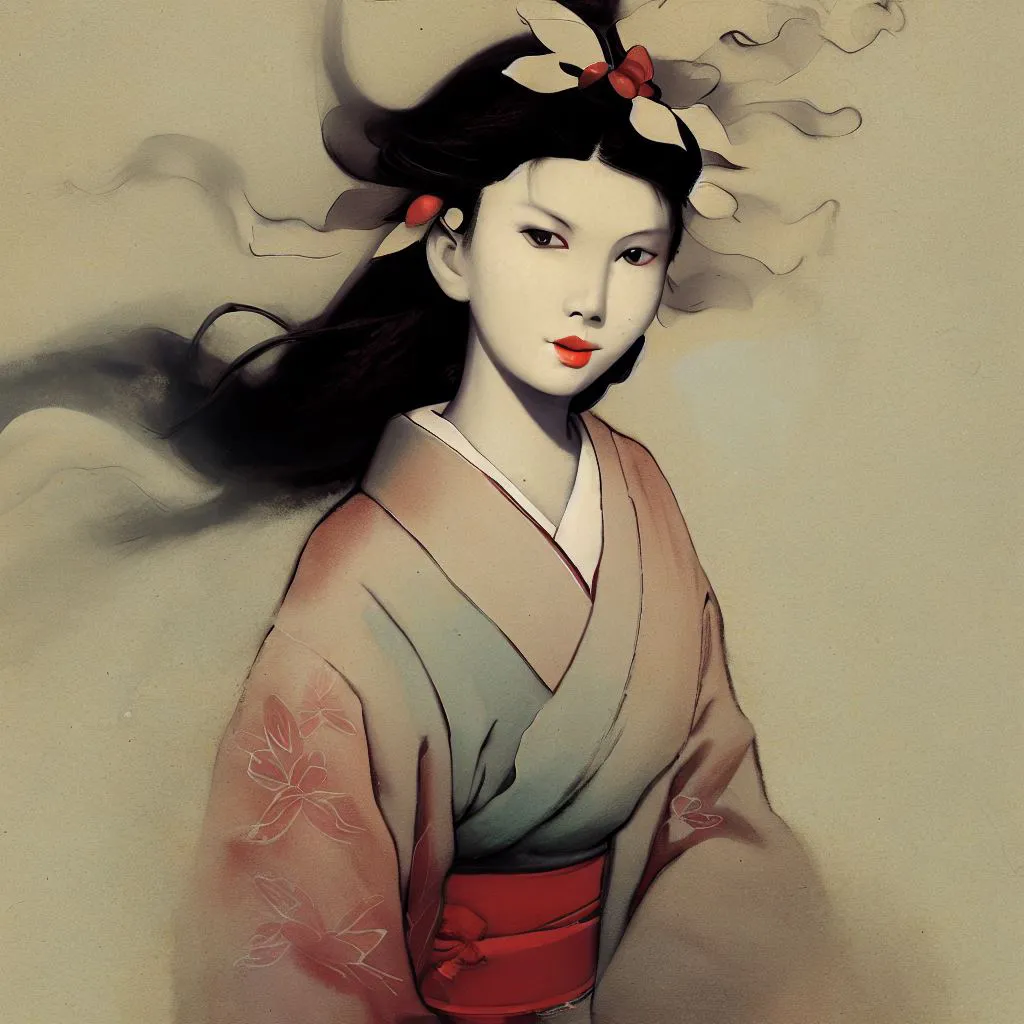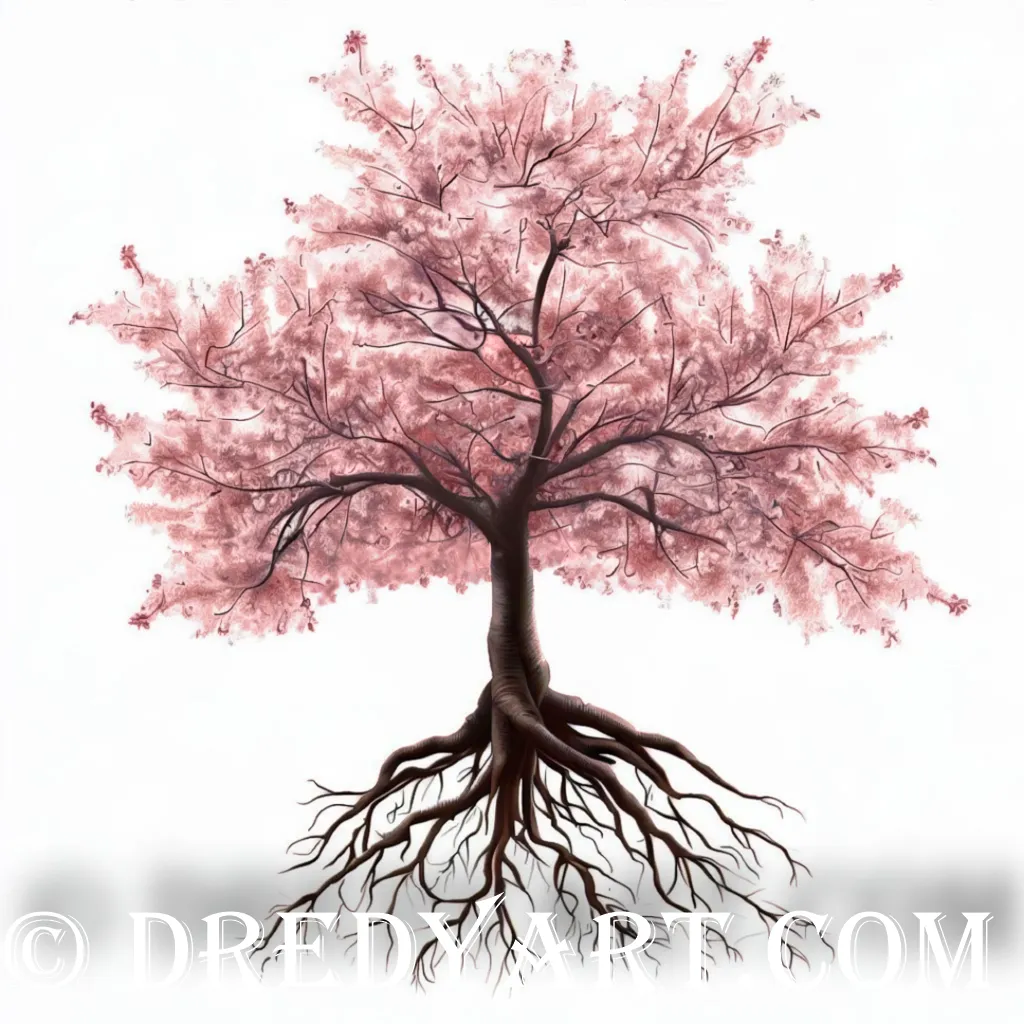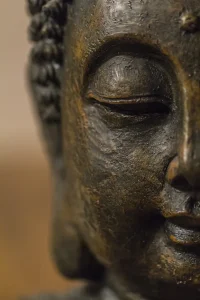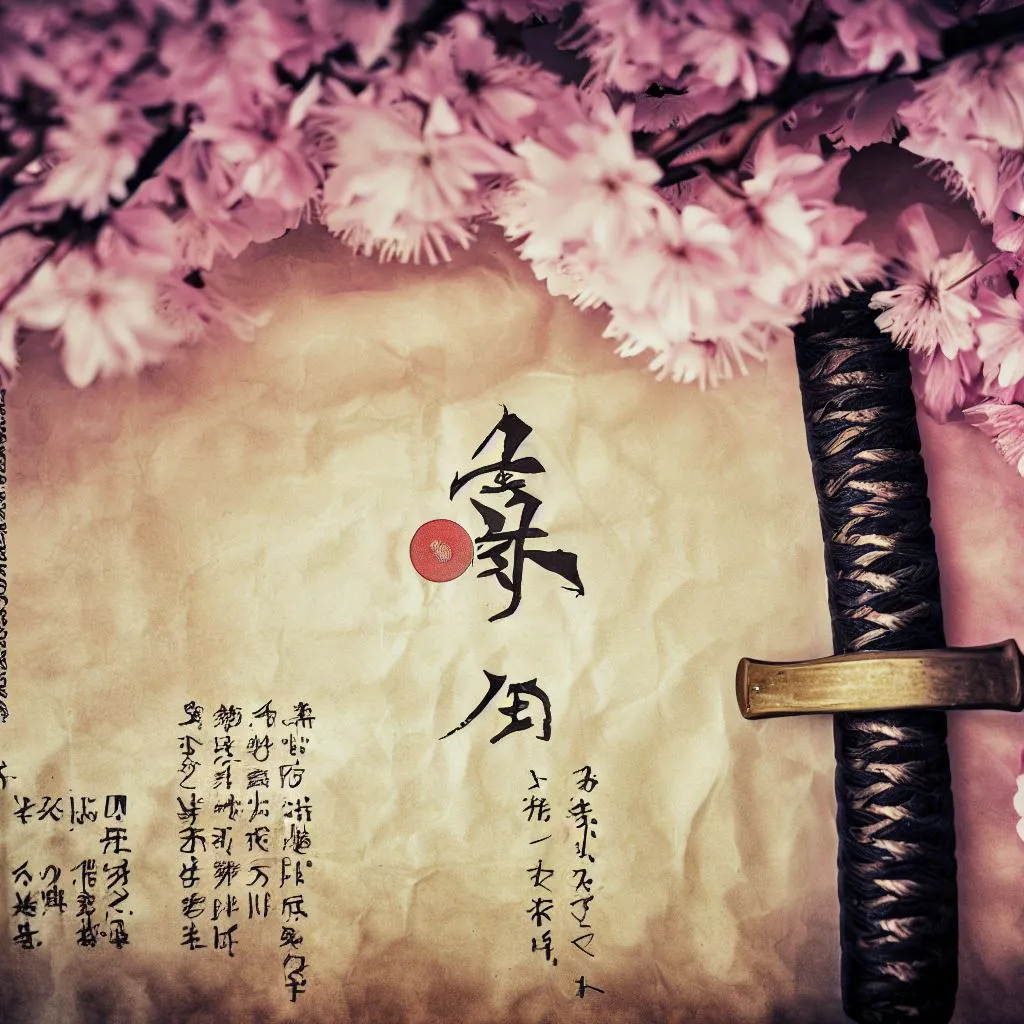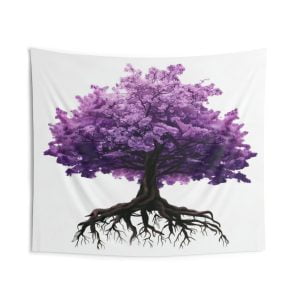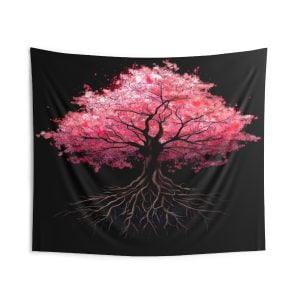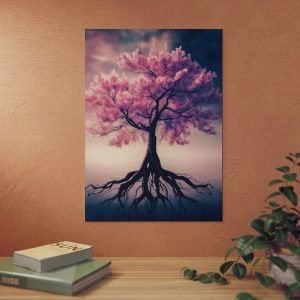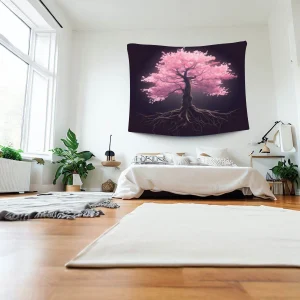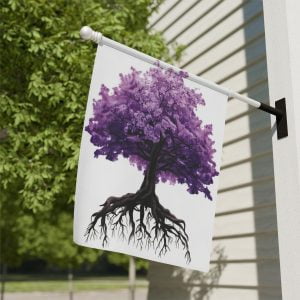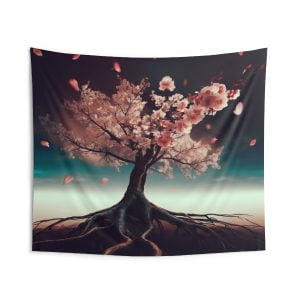How the Cherry Tree of Life
Became a National Symbol of Japan
and a Source of Art and Poetry
If you have ever visited Japan in spring, you might have witnessed one of the most spectacular sights in nature:
The Cherry Tree of Life, Tree of Blossoms, or Sakura Tree, in full bloom.
The delicate pink flowers cover the landscape like a soft blanket,
creating a contrast with the blue sky and the green grass.
The cherry blossoms are not only beautiful to look at but also deeply meaningful to the Japanese people.
They symbolize the Cherry Tree of Life, a concept that reflects the essence of Japanese culture and spirituality.
In this blog post, we will explore how the cherry tree became a national symbol of Japan and a source of inspiration for art and poetry.
We will trace the history of the cherry tree in Japan, from its ancient origins to its modern manifestations.
We will also examine the symbolism of cherry blossoms in various aspects of Japanese culture, such as festivals, traditions, and aesthetics.
Finally, we will see how the cherry tree has spread beyond Japan’s borders and become a global phenomenon.
The Cherry Tree’s Deep Roots in Japanese Culture
Historical origins of cherry tree cultivation in Japan
The cherry tree has a long and rich history in Japan. According to some scholars, the first cherry trees were brought to Japan from China around the 3rd century CE.
They were planted in imperial gardens and temples as ornamental plants.
However, it was not until the Heian period (794–1185) that the cherry tree became widely popular among the aristocracy and the common people.
The cherry tree was revered as a sacred plant in ancient Japan. It was believed to be inhabited by spirits or gods and was often used as a medium for divination or communication with the supernatural.
The cherry tree was also associated with mountains, which were considered sacred places where gods dwelled.
Many famous cherry trees in Japan are located on or near mountains, such as Mount Yoshino in Nara and Mount Fuji in Yamanashi.
Role of Cherry Tree of Life in Japanese Folklore
Princess Konohana Sakuya Hime,
the goddess of Mount Fuji and cherry blossoms
She was married to Ninigi no Mikoto, the grandson of the sun goddess Amaterasu.
When she became pregnant, her husband doubted her fidelity and demanded that she prove her innocence by giving birth in a hut surrounded by fire.
She agreed and gave birth to three sons, who emerged unharmed from the flames.
The fire symbolizes the cherry blossoms, which bloom and fall in a short span of time.
Cherry Blossoms as a National Symbol of Tree of Life
The symbolism of cherry blossoms in Japan
The symbolism of the cherry blossoms in Japan is complex and multifaceted.
On one hand, they represent the beauty and joy of life, as they mark the arrival of spring and the renewal of nature.
They also evoke a sense of nostalgia and romance, as they remind people of their childhood memories and their loved ones.
On the other hand, they represent the transience and fragility of life, as they last only for a few days before they wither and fall.
They also evoke a sense of sadness and melancholy, as they remind people of their mortality and their losses.
Representing the impermanence of life (Mono no Aware)
Mono no aware is a central theme in Japanese aesthetics and philosophy, especially in Buddhism. It teaches people to appreciate the present moment and the beauty of nature, as well as to accept the inevitable change and suffering that come with life.
Cherry Blossoms and the Samurai code (Bushido)
Bushido is the code of ethics and conduct that guided the samurai, the feudal warriors who served their lords with loyalty and honor.
The samurai admired the cherry blossoms for their beauty and courage, as they bloomed without fear of death. The samurai also identified with the cherry blossoms for their brevity and brilliance, as they lived short but glorious lives on the battlefield.
Cherry Tree of Life in Japanese festivals and traditions
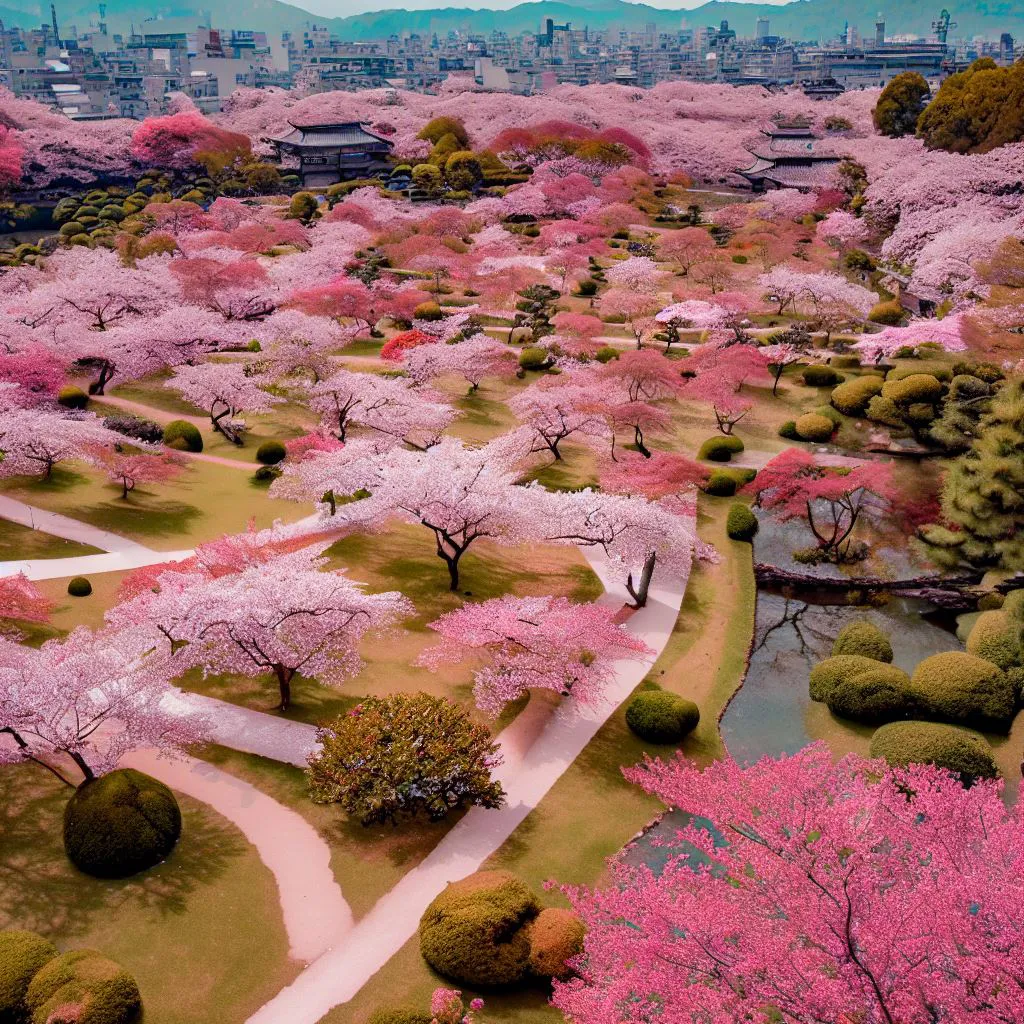
Hanami (Cherry blossom viewing)
The cherry blossoms are deeply ingrained in Japanese festivals and traditions. One of the most popular activities is hanami (花見), which means “flower viewing” in Japanese
Hanami is an ancient custom that dates back to at least the eighth century, when people gathered under the cherry trees to enjoy their beauty and fragrance.
Hanami is still practiced today by millions of people who flock to parks, gardens, temples, and riversides to picnic, drink, sing, dance, and socialize under the cherry blossoms.
Cherry Tree of Life and weddings
Another tradition related to cherry blossoms is weddings.
Many couples choose to get married during the Sakura season, as they believe that it will bring them happiness and prosperity.
Some couples also incorporate cherry blossoms into their wedding ceremonies, such as wearing kimono with cherry blossom motifs, exchanging cherry blossom rings, or throwing cherry blossom petals instead of rice.
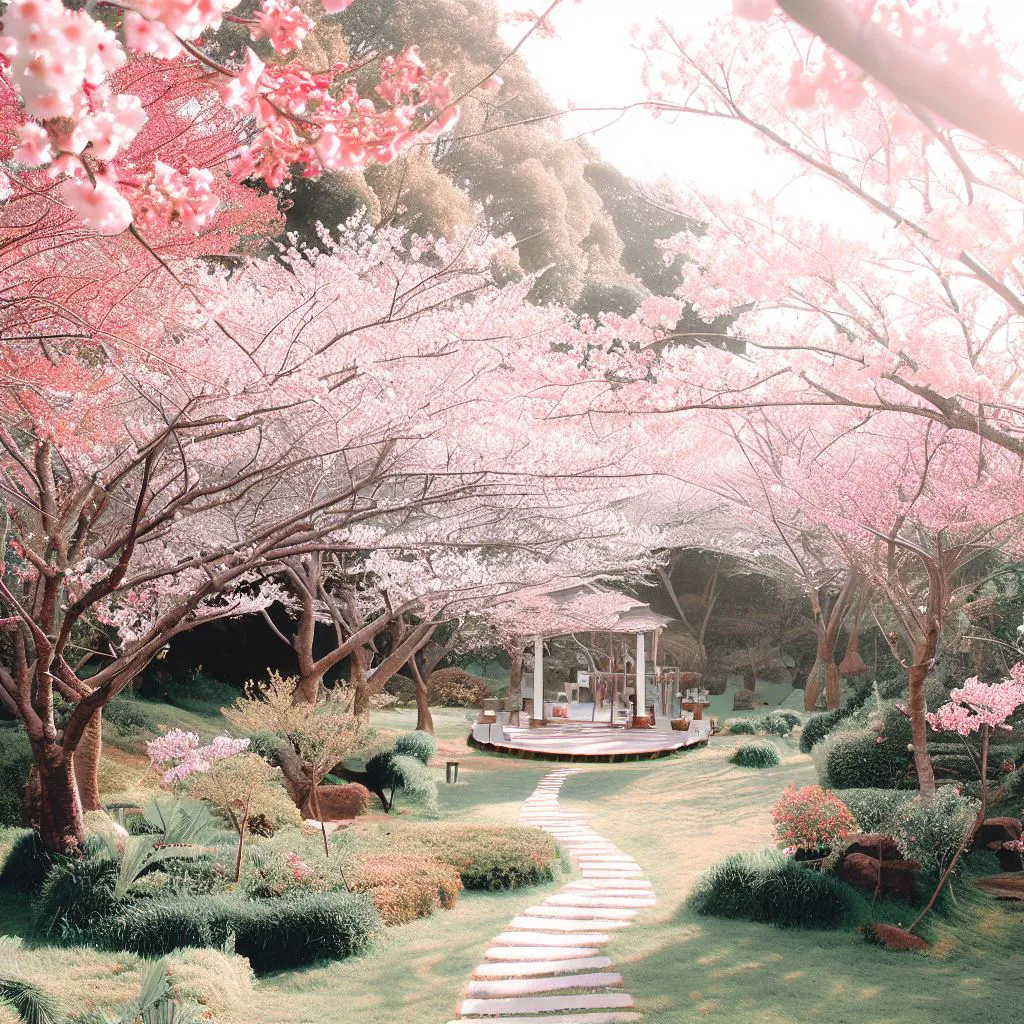
Cherry Blossoms:
Tree of life in Japanese Art
Influence of cherry tree of life on traditional Japanese art

Ukiyo-e (woodblock prints) featuring cherry blossoms
The influence of Cherry Blossoms Tree of Life on Japanese art is immense and diverse. Cherry blossoms have been depicted in various forms of traditional Japanese art, such as painting, calligraphy, sculpture, pottery, and lacquerware.
One of the most famous examples is ukiyo-e (浮世絵), which means “pictures of the floating world” in Japanese.
Ukiyo-e are woodblock prints that depict scenes from everyday life in the Edo period (1603–1868), such as landscapes, portraits, kabuki theater, and erotica.
Many ukiyo-e artists, such as Hokusai, Hiroshige, and Utamaro, featured cherry blossoms in their works, creating stunning images of color and contrast.
Cherry blossoms in kimono patterns
Cherry blossoms are also a common element in kimono patterns.
Kimonos are traditional Japanese garments that consist of a long robe wrapped around the body and secured with a sash called an obi.
Kimonos are usually made of silk and decorated with various motifs that reflect the season, occasion, or personality of the wearer.
Cherry blossoms are often used as a spring motif, symbolizing youth, beauty, and femininity. They are also used as a wedding motif, symbolizing love, happiness, and fertility.
Modern art and cherry tree of life
In modern times, cherry blossoms have continued to inspire Japanese artists in various media and genres. Some examples are:
Contemporary Japanese Artists inspired by cherry blossoms
A contemporary artist known for her psychedelic paintings, sculptures, and installations that feature polka dots and infinity mirrors
She has also created several works that incorporate cherry blossoms, such as The Obliteration Room (2002), where visitors can stick colorful dot stickers on a white room filled with furniture and objects;
and Ascension of Polka Dots on the Trees (2006), where she wrapped trees with red polka dot fabric along the Singapore River.
A director and animator known for his realistic and emotional films that explore themes such as love, distance, and time.
He has also used cherry blossoms as a visual motif in several of his films, such as 5 Centimeters per Second (2007), where they symbolize the fleeting nature of love and life; and Your Name (2016), where they symbolize the connection between two strangers who switch bodies.
A manga artist and creator of Sailor Moon (1991-1997), one of the most popular and influential manga and anime series of all time.
She has also used cherry blossoms as a symbol of romance and transformation in her story, such as when Usagi (Sailor Moon) and Mamoru (Tuxedo Mask) first meet under a cherry tree; or when Usagi transforms into Princess Serenity with a shower of cherry petals.
Cherry Blossoms in Japanese Poetry
Haiku and Cherry Blossoms
Haiku is a form of traditional Japanese poetry that consists of three lines with
17 syllables in total (5-7-5)
Haiku is usually written about nature or everyday life, using simple and direct language.
Haiku also follows the Rule of Kigo (季語), which means “Season Word” in Japanese.
Kigo are words or phrases that indicate the season in which the haiku is set, such as snow for winter or moon for autumn.
Cherry blossoms are one of the most common Kigo for spring, as they capture the essence of the season.
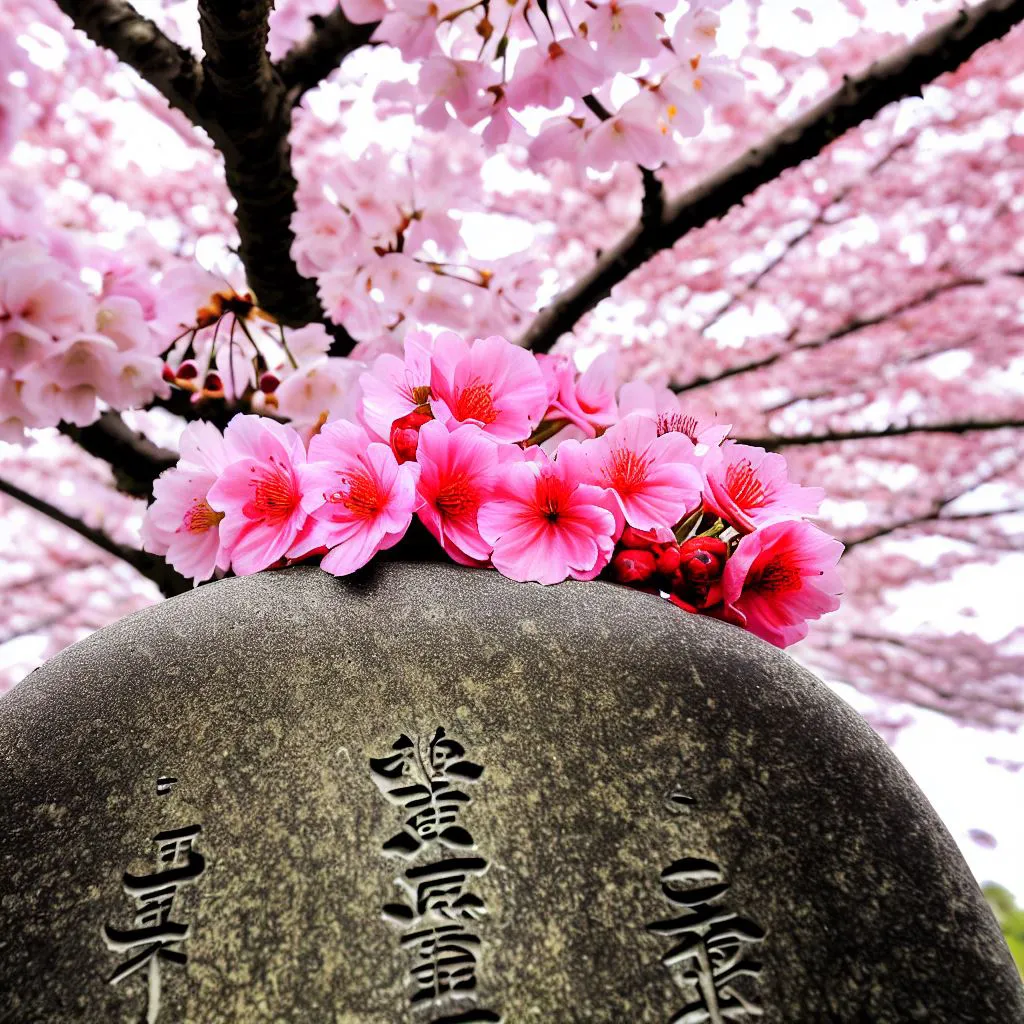
Famous haiku poets and their cherry blossom poems
Many famous haiku poets have written about cherry blossoms in their poems. Some examples are:
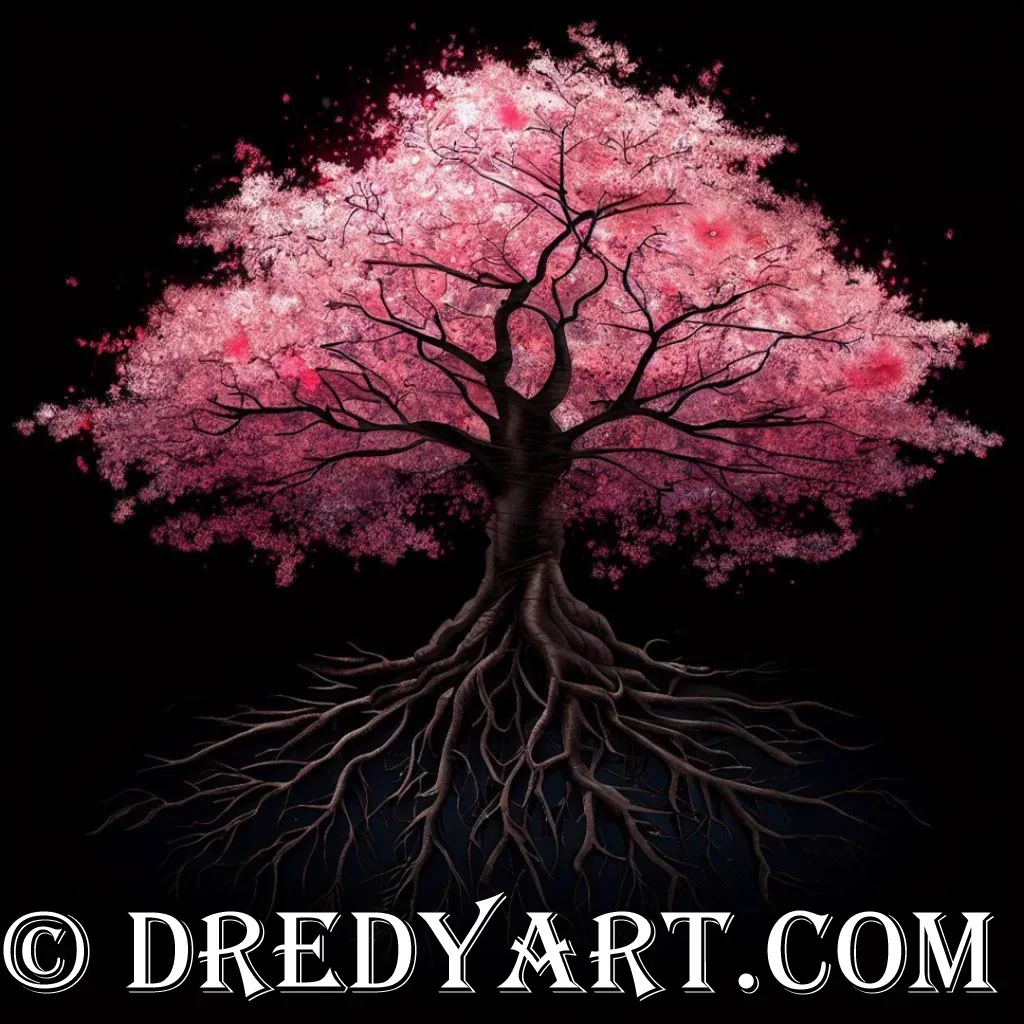
Cherry Blossoms in Classical Waka Poetry
Waka is another form of traditional Japanese poetry that predates haiku.
Waka means “Japanese poem” in Japanese, and it refers to a variety of poetic forms that use 31 syllables or less.
The most common form of waka is Tanka (短歌), which means “short poem” in Japanese. Tanka consists of five lines with 31 syllables in total (5-7-5-7-7).
Tanka are usually written about nature, love, or emotions, using figurative language and imagery.
Tanka also follows the rule of Kireji (切れ字), which means “cutting word” in Japanese.
Kireji are words or punctuation marks that indicate a pause or a change of tone in the poem, usually placed at the end of the third or fifth line.
Famous Waka poets and their Sakura tree of life poems
Cherry blossoms have been a popular subject for waka poets since ancient times.
They were often used to express admiration, affection, or longing for someone or something.
Cherry blossoms were also used to convey the impermanence and sadness of life, as well as the hope and joy of spring.
Some examples of classical waka poets who wrote about cherry blossoms are:
The cherry blossoms at dawn Are whiter than the snow.”
How many times have I seen them fall Since I parted from you?”
But I cannot see them now For the tears that fill my eyes.”
The enduring influence of Cherry Blossoms in
Contemporary Japanese poetry
**Attention, Cherry lovers!** If you click on any of the images on this page, you will be redirected to a webpage where you can buy amazing wall art products featuring "The Cherry Tree of Life by DredyArt"
Cherry blossoms have remained a source of inspiration for Japanese poets in modern times.
Many contemporary Japanese poets have written about cherry blossoms in various styles and forms, such as:
Free Verse, Sonnet, and Haibun.
Some examples are:
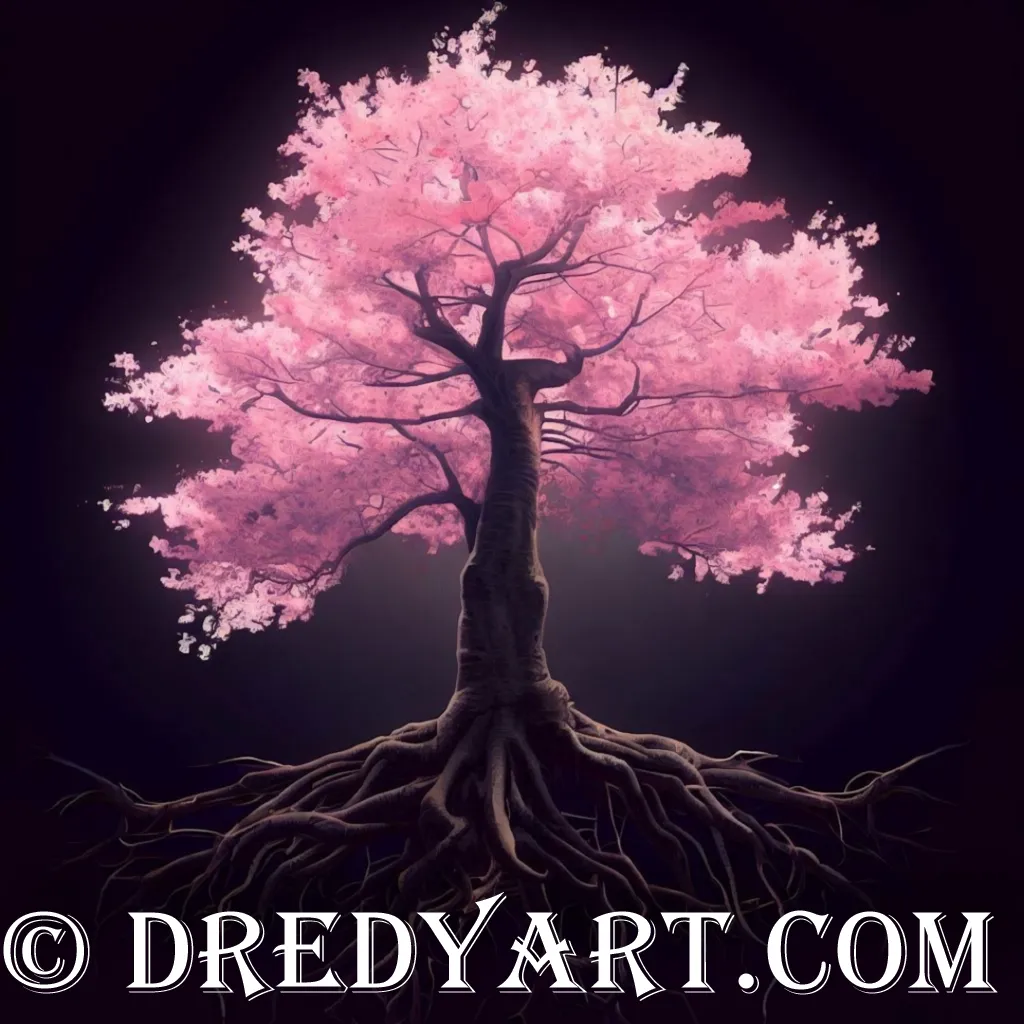
I want to be buried under a cherry blossom tree When I die I want to return to the soil under a cherry blossom tree When I die
I don’t want to be cremated and scattered in the sea or the sky I don’t want to be buried in a cemetery with a tombstone or a plaque I don’t want to be remembered by anyone or anything
I just want to be buried under a cherry blossom tree When I die I just want to become part of the cherry blossom tree When I die”
Cherry blossoms are not flowers They are the daytime stars They are the fireworks of spring They are the sighs of young lovers They are the dreams of old poets They are the tears of the gods They are the smiles of the earth.”
At sunrise, glorious sunrise it’s a big catch! A big catch of cherry blossoms!
The net is full, full! The boat is full, full! And I am full too, full of cherry blossom joy!”
Cherry Trees Beyond Japan’s Borders
The spread of cherry trees to other countries
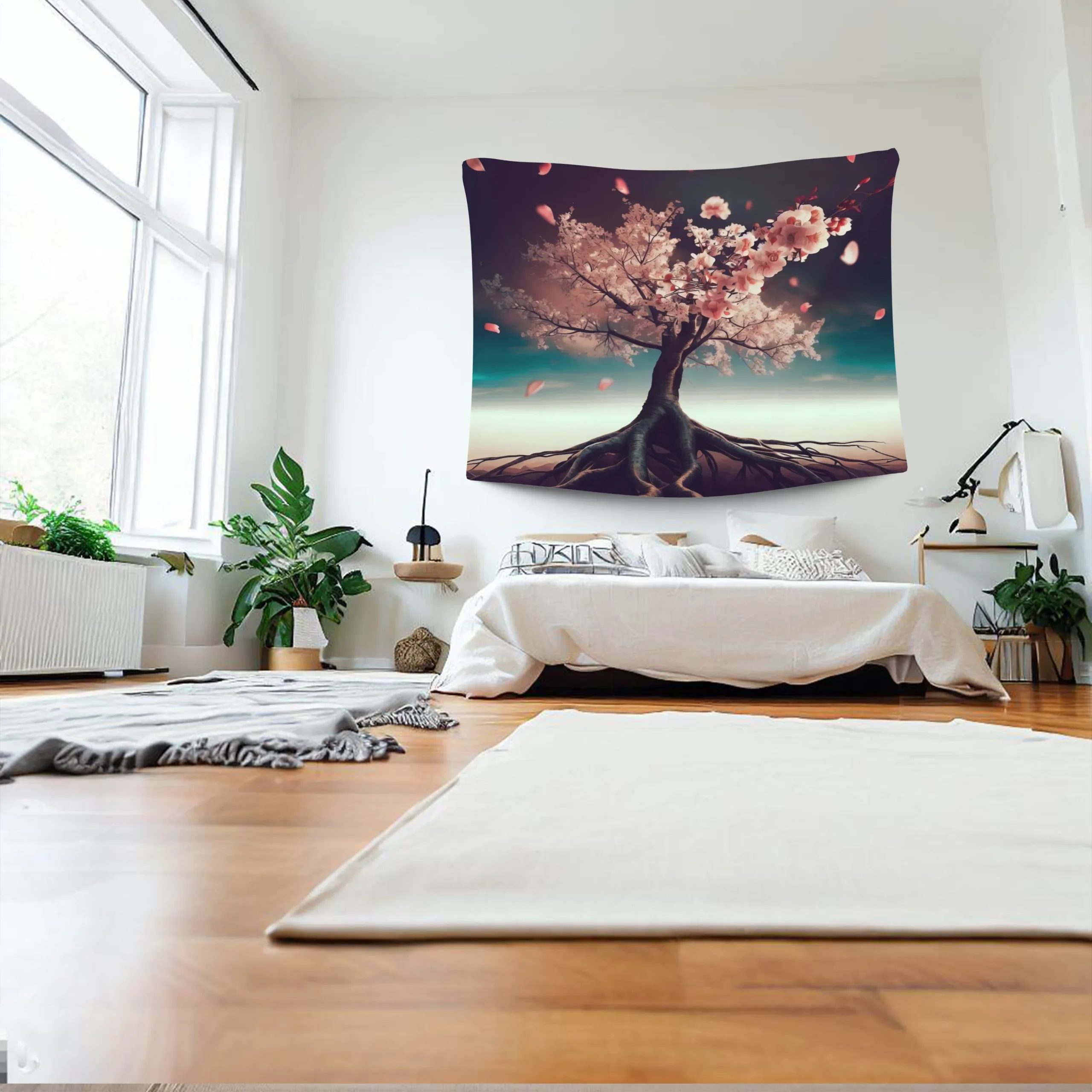
The cherry tree has not only captivated the hearts and minds of the Japanese people, but also those of people from other countries and cultures.
The cherry tree has been introduced to many parts of the world, either by natural means or by human intervention.
The cherry blossoms have become a symbol of friendship and diplomacy between nations, as well as a source of beauty and joy for people everywhere.
**Attention, Cherry lovers!** If you click on the images on this page, you will be redirected to a webpage where you can buy amazing wall art products featuring "The Cherry Tree of Life by DredyArt"
Cherry blossoms in Washington, D.C.
One of the most famous examples of cherry trees outside Japan is in Washington, D.C., where there are about 3,000 cherry trees along the Tidal Basin near the Jefferson Memorial.
These trees were a gift from Japan to the United States in 1912, as a gesture of goodwill and friendship.
The trees have become an iconic attraction in the capital city, especially during the annual National Cherry Blossom Festival,
which celebrates the blooming of the trees and the cultural exchange between the two countries.
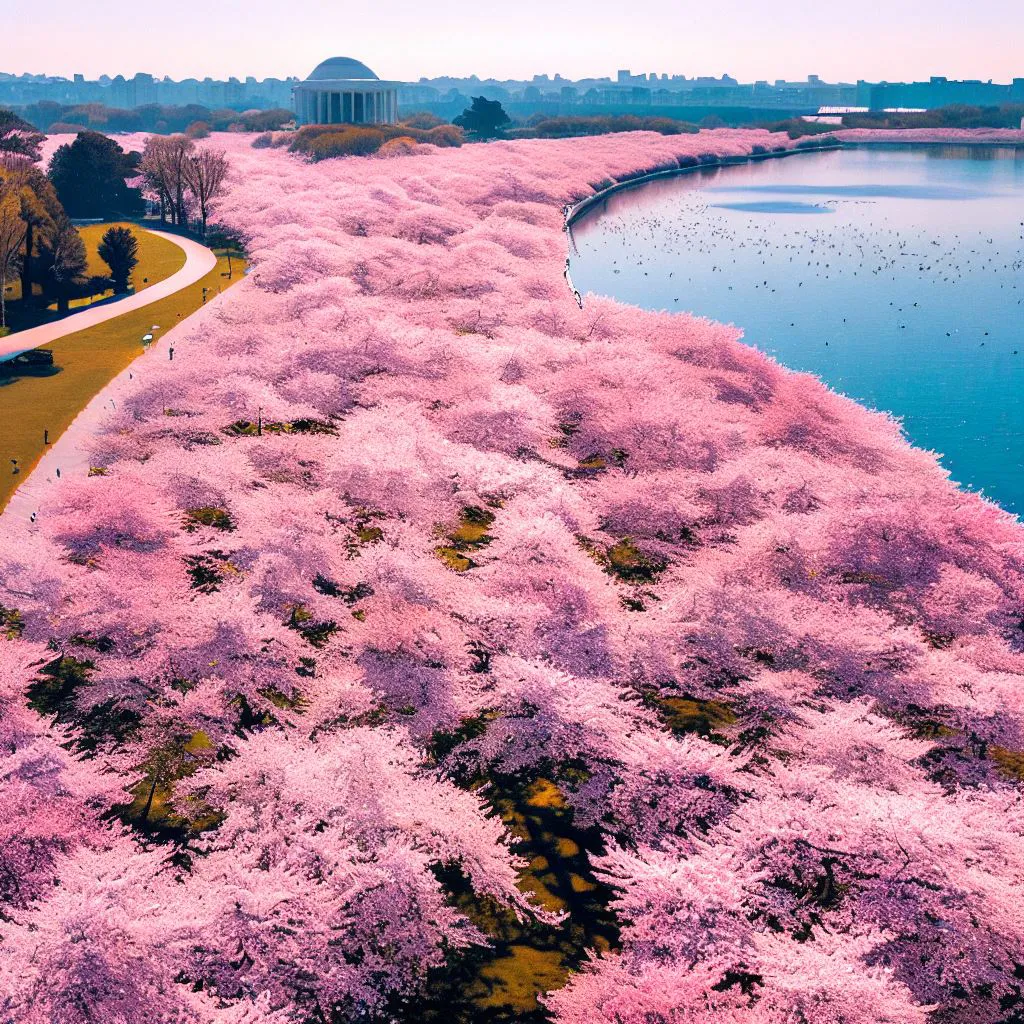
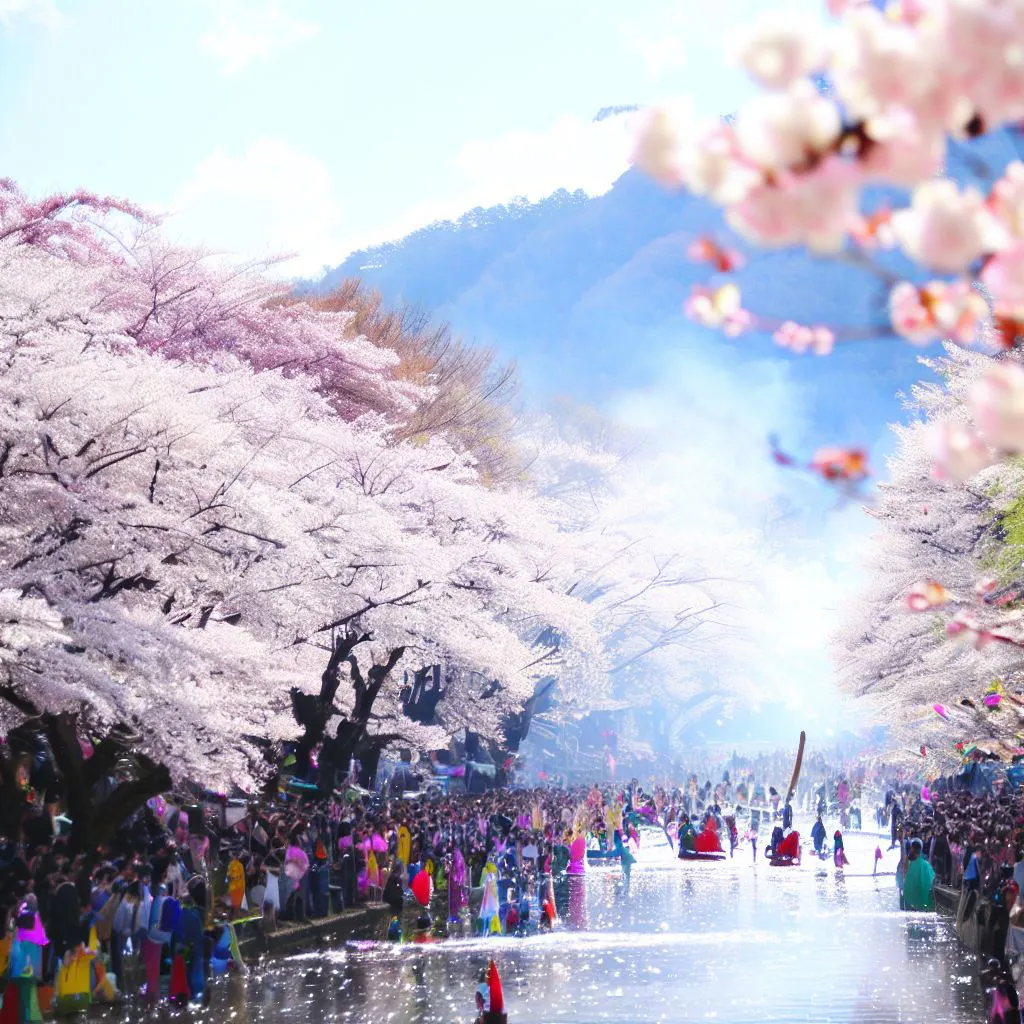
Cherry blossoms in South Korea
Another example is in South Korea, where there are about 1.5 million cherry trees across the country.
These trees were mostly planted during the Japanese occupation of Korea from 1910 to 1945, as part of Japan’s colonial policy to assimilate Korea into its empire.
The trees have become a controversial topic in Korea, as some people see them as a reminder of the painful history, while others see them as a natural heritage and a source of beauty.
The trees are also celebrated in various festivals and events, such as the Jinhae Gunhangje Festival,
Which is the largest Cherry Blossom Festival in Korea.
Global appreciation and celebration of cherry blossoms

The cherry tree has also spread to other regions and continents, such as Europe, North America, South America, Australia, and Africa.
The cherry blossoms have been admired and appreciated by people from different backgrounds and cultures, who have found their own meanings and interpretations of the Cherry Tree of Life.
The cherry blossoms have also inspired artists and poets from around the world, who have expressed their feelings and thoughts about the flowers in their works.
**Attention, Cherry lovers!** If you click on the images on this page, you will be redirected to a webpage where you can buy amazing wall art products featuring "The Cherry Tree of Life by DredyArt"
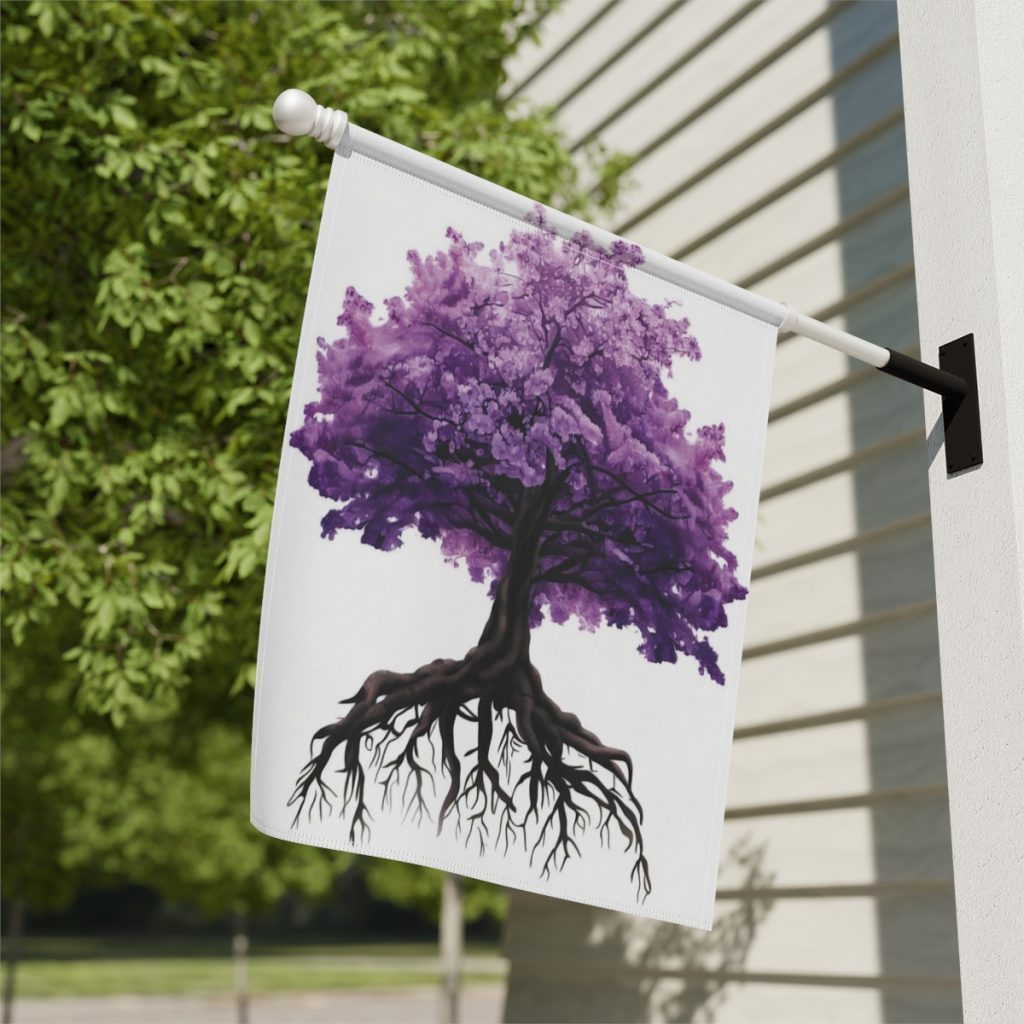
Conclusion
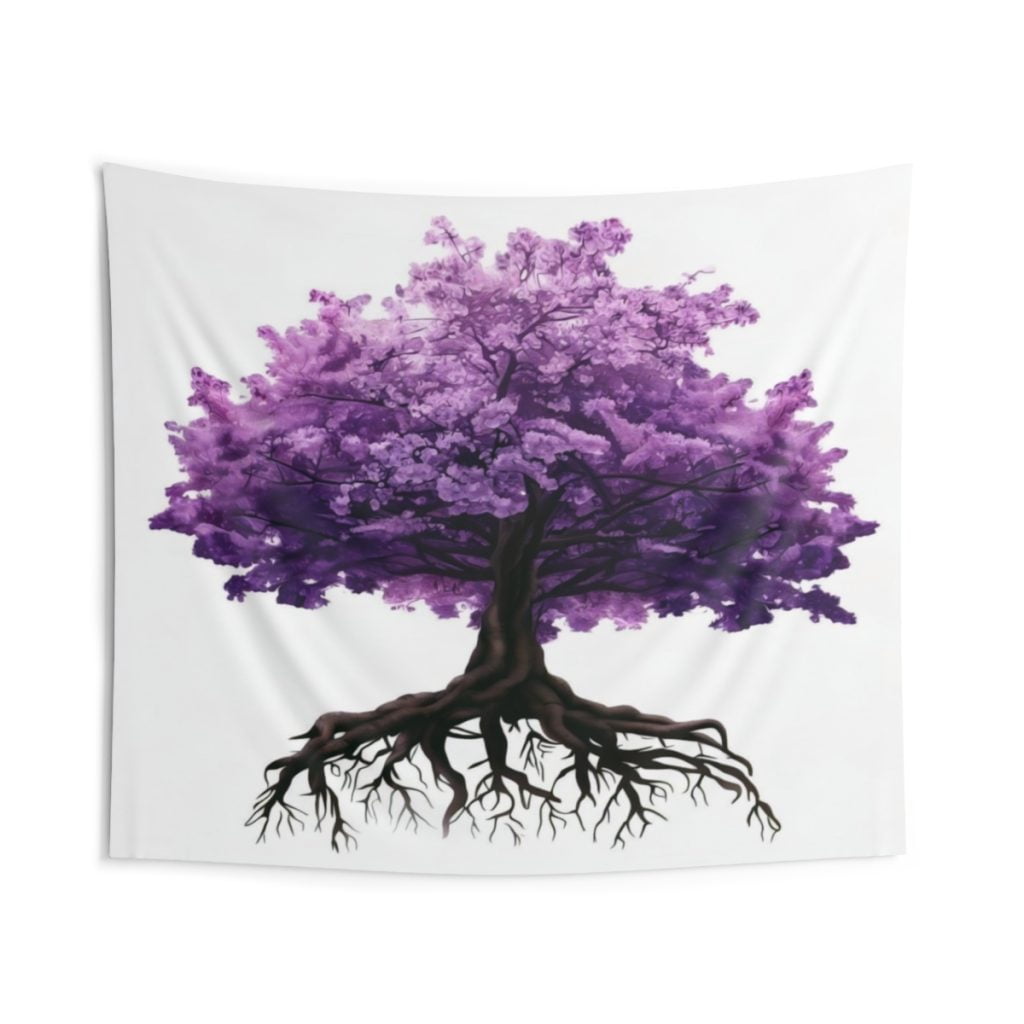
Summarizing the journey of the cherry tree from Japan to the world
The cherry tree is more than just a plant. It is a symbol of life, death, and everything in between.
It is a source of art, poetry, and culture. It is a bridge between nations, peoples, and generations. It is a gift from nature to humanity.
Reflecting on the enduring significance of the Cherry Tree of Life
The cherry tree has traveled from Japan to the world, and from the world to Japan.
It has enriched and enlightened the lives of millions of people who have seen, smelled, touched, or tasted its blossoms.
It has also touched the hearts and souls of those who have not.



